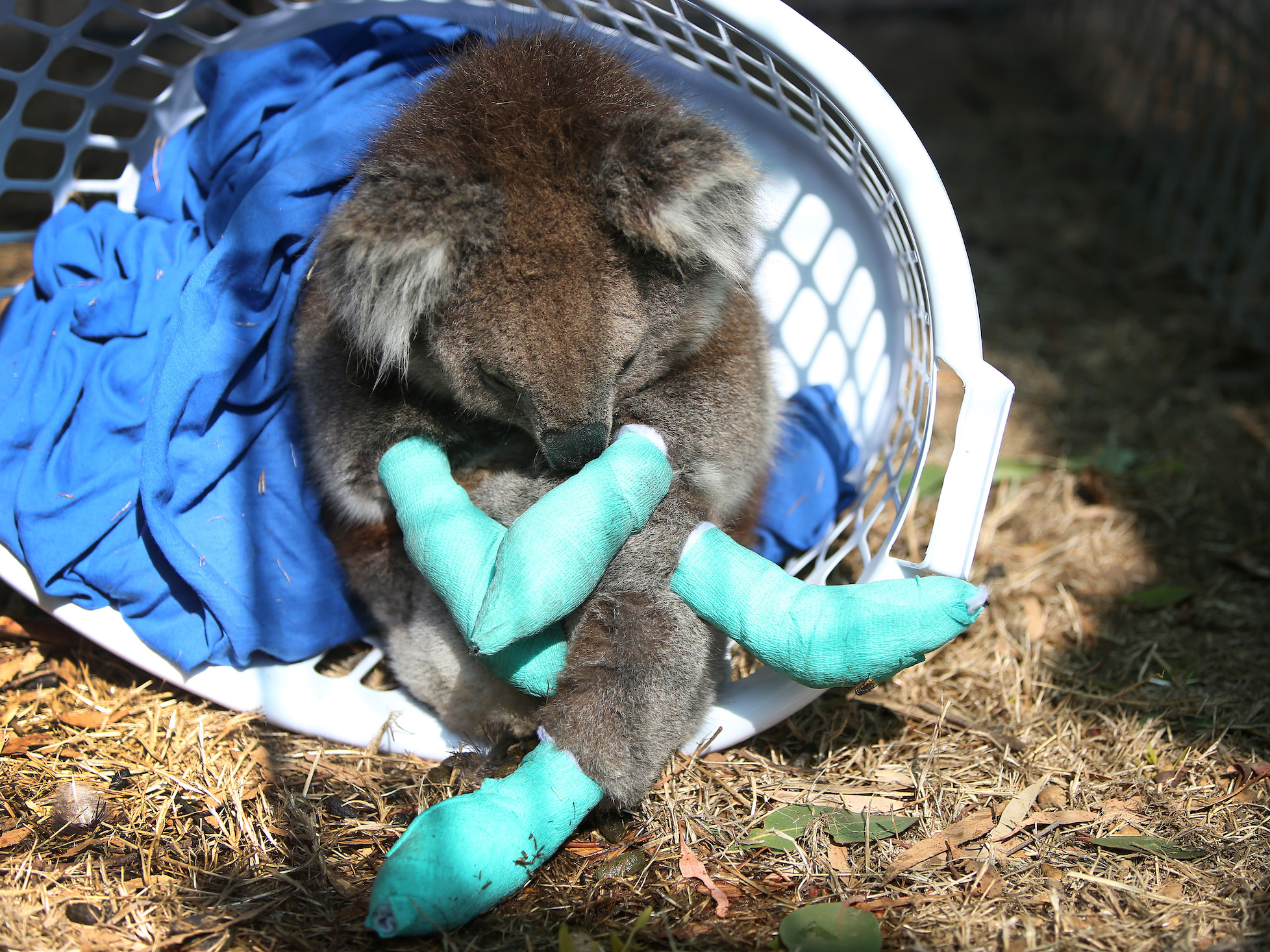- Since September, unprecedented bushfires have razed an estimated 25 million acres in Australia.
- More than 1 billion animals are feared dead in the blazes.
- Horrifying images show burned koalas, birds, and wallabies.
- Visit Insider’s homepage for more stories.
This week, the estimated number of animals feared dead in Australia’s devastating bushfires soared to more than 1 billion.
As the country enters its third year of an unprecedented drought, blazes have burned an estimated 25 million acres – 46% more than the total that burned in the Brazilian Amazon last year. Australia’s dry season still has another two months to go.
Despite rescue efforts, tens of thousands of koalas are estimated to have died on one island alone. Ecologists fear the fires could wipe endangered species off the map.
Disturbing images from the fires’ aftermath are beginning to emerge.
Warning: This post contains graphic images of dead animals.
Unprecedented, deadly bushfires have raged across Australia since September.

Hundreds of thousands of people have been forced to evacuate, and at least 25 have died. An estimated 2,000 homes have been destroyed.
The fires have razed an estimated 25 million acres across the continent.

That's an area larger than South Korea and 46% bigger than that which burned in the Brazilian Amazon last year.
In some areas the fires are so large they've created their own weather.

The smoke generates clouds that create thunderstorms, ultimately leading to more fires.
Despite rescue and treatment efforts, 1 billion animals are feared dead amid the blazes.

Warning: The following images contain graphic content.
Last week, ecologists estimated that 480 million mammals, birds, and reptiles had died in the fires. But on Monday that number skyrocketed.

Chris Dickman, an ecologist at the University of Sydney, told HuffPost that last week's estimate was conservative and considered only the state of New South Wales.
"Over a billion would be a very conservative figure," Dickman told HuffPost.

Dickman said researchers didn't have population data for animals like bats, frogs, and invertebrates, making it difficult to know how many had died.
The fires could wipe out some endangered species, including the southern corroboree frog and the mountain pygmy-possum.

The fires have burned one-third of Kangaroo Island, known for its nature preserves and endangered bird species.

Ecologists estimate that 25,000 koalas have died in the island's Flinders Chase National Park.

That's half of the park's koala population.
Koalas can't move fast enough to escape the fires, the ecologist Mark Graham told Parliament in December. Koalas also eat leaves from eucalyptus trees, which are highly flammable.
"The fires have burned so hot and so fast that there has been significant mortality of animals in the trees, but there is such a big area now that is still on fire and still burning that we will probably never find the bodies," Graham said, according to The Guardian.
Each day Australians have brought about 30 injured koalas to the Kangaroo Wildlife Park, at the edge of the island's fire zone.

"At least a third of what has been brought in we've had to euthanize unfortunately," Sam Mitchell, a co-owner of the park, told The Guardian.

He said residents had also brought in kangaroos, wallabies, and pygmy possums.
"We are seeing many burns to hands and feet – fingernails melted off," Mitchell said. "For some the burns are just too extreme."

Rescuers fear many animals simply can't escape the fires.

"We're not getting that many animals coming into care," Tracy Burgess, a volunteer at Wildlife Information, Rescue, and Education Services, told Reuters. "Our concern is that they don't come into care because they're not there anymore, basically."
On Thursday, the owner and some staff members of the Kangaroo Island Wildlife Park said they were going to stay despite the threat of fires on the island.

According to 7 News, they are staying to protect the roughly 700 animals in their care.
The nearby town of Parndana was evacuated by the Country Fire Service and the Australian Defence Force.
